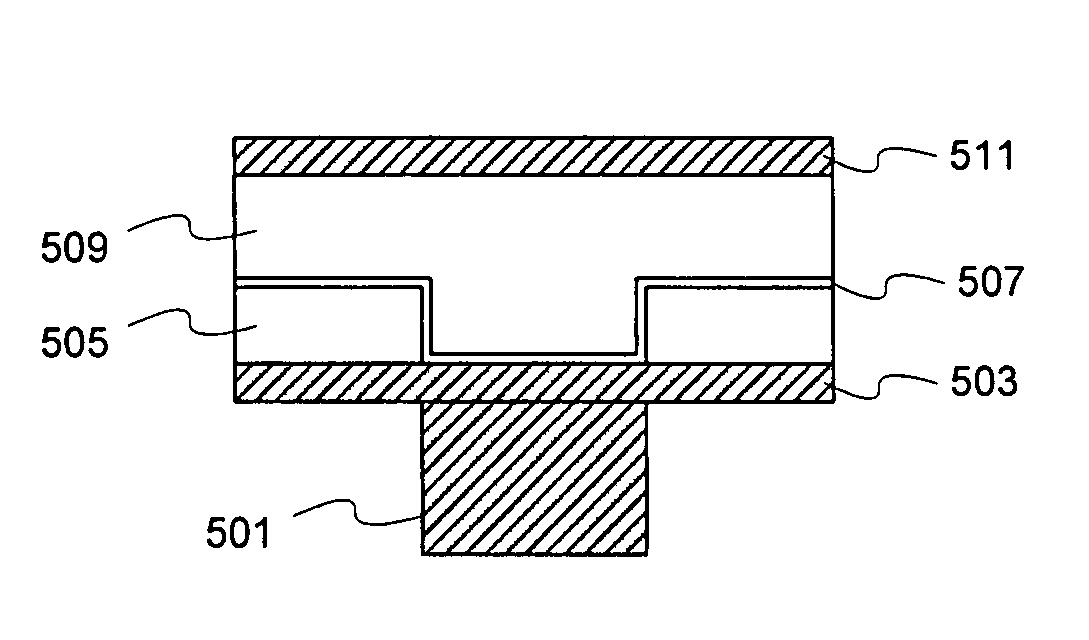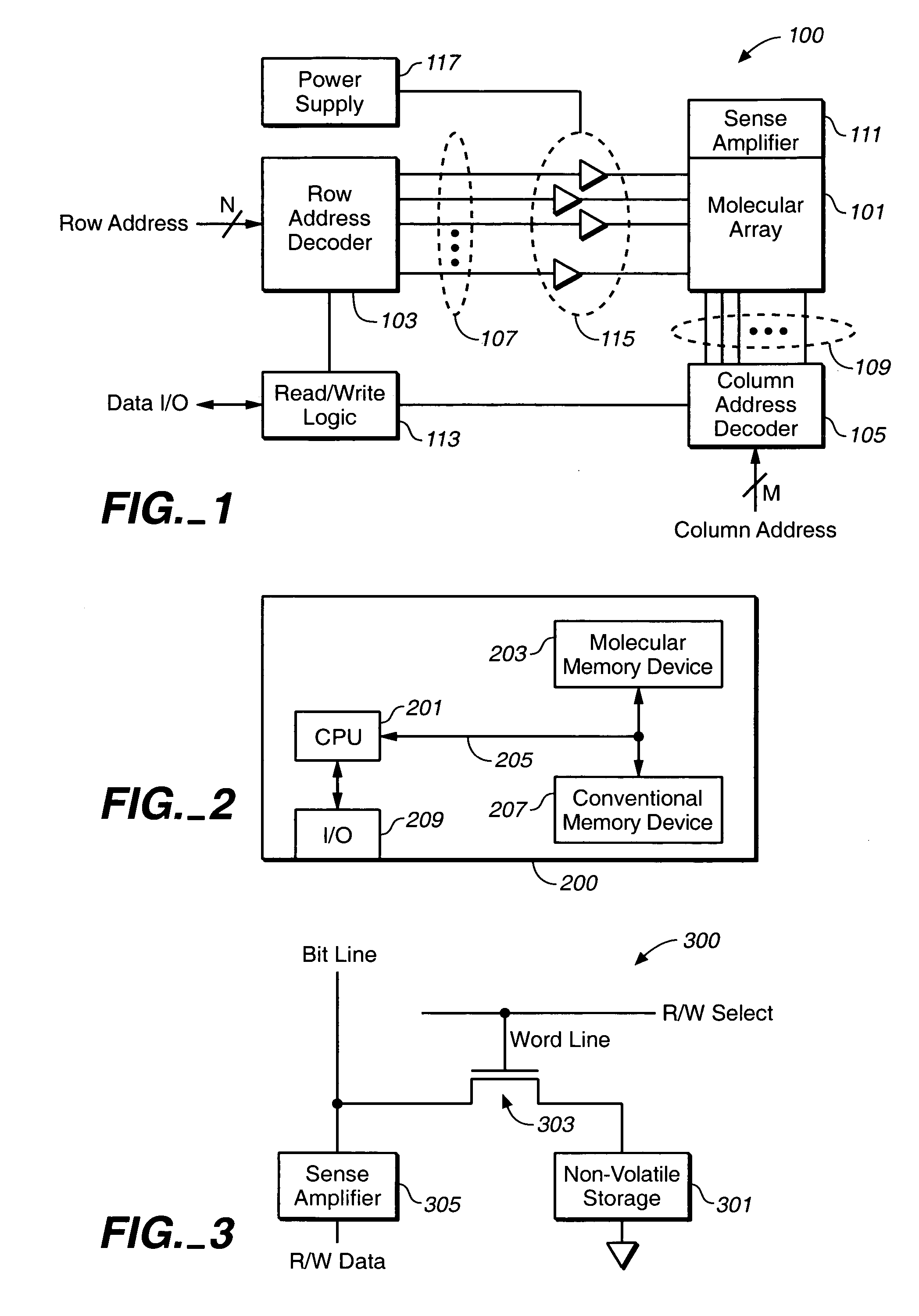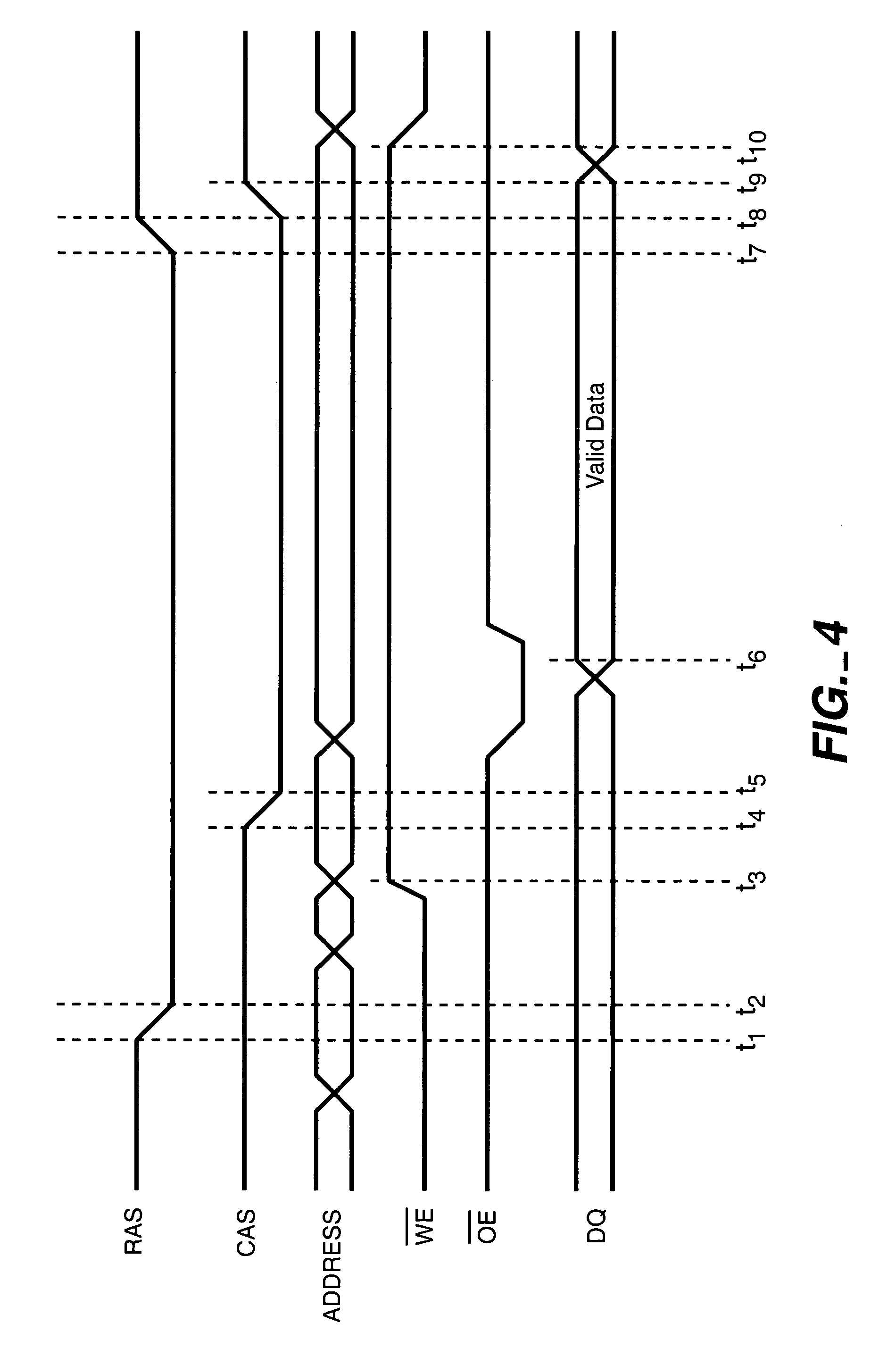Molecular memory devices and methods
a molecular memory and molecular memory technology, applied in the field of memory devices, can solve the problems of capacitors being inherently “leaky” devices, affecting at least some of these important parameters, and the size of conventional semiconductor memory cells continues to be reduced
- Summary
- Abstract
- Description
- Claims
- Application Information
AI Technical Summary
Problems solved by technology
Method used
Image
Examples
Embodiment Construction
[0039]The present invention contemplates a number of device and system architectures that enable the use of molecular memory elements (sometimes referred to herein and in related applications as “storage molecules” or “memory molecules”) to be integrated with and benefit from the technology developed for conventional microelectronics. At one level the present invention involves molecular memory elements that integrate storage molecules with switching logic that enables reading and writing to the storage molecules. At another extreme, the represent invention contemplates highly integrated circuits having logic devices, including data processing circuitry, integrated monolithically with molecular memory arrays to provide new and useful functions that leverage one or more the unique features of molecular memory such as lower power usage, superior data persistence, higher information density, and the like.
[0040]There are a wide variety of suitable storage molecules for use in the presen...
PUM
 Login to View More
Login to View More Abstract
Description
Claims
Application Information
 Login to View More
Login to View More - R&D
- Intellectual Property
- Life Sciences
- Materials
- Tech Scout
- Unparalleled Data Quality
- Higher Quality Content
- 60% Fewer Hallucinations
Browse by: Latest US Patents, China's latest patents, Technical Efficacy Thesaurus, Application Domain, Technology Topic, Popular Technical Reports.
© 2025 PatSnap. All rights reserved.Legal|Privacy policy|Modern Slavery Act Transparency Statement|Sitemap|About US| Contact US: help@patsnap.com



